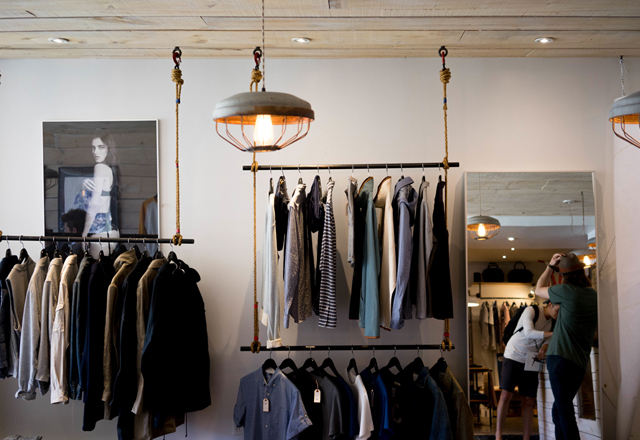Millennials: the force driving thrifting’s upsurge

What’s old is new again.
Need proof? One look at the resale market—particularly in clothing — makes it abundantly clear that a change in market dynamics is happening.
A few months ago, GlobalData and online clothing retailer ThredUP released a study that estimated that the U.S. second-hand apparel market was worth $24 billion in 2018. Within 10 years, by 2028, the used-fashion market in the United States could explode, reaching $64 billion, an increase of 166 percent.
Goodwill stores and their ilk – church thrift shops, charity donation centers, etc. – have been around for years. That hasn’t changed.
But their ability to use technology to help categorize, price and display goods has exponentially increased. That, coupled with a burgeoning online presence has helped the segment grow.
But what has really made it popular is the millennial generation.
Millennials: today’s social conscience – and it shows in retail
Millennials are particularly attuned to being stewards of the planet.
As a result, the idea of using natural resources to create new products when used goods serve the purpose perfectly is anathema to these young adults.
Buying hand me-downs has a significantly smaller ecological footprint than purchasing new: According to thebalance.com, the annual environmental impact of a household’s clothing is equivalent to the water needed to fill 1,000 bathtubs and the carbon emissions from driving an average modern car for 6,000 miles.
Millennials also are extremely interested in supporting brands that share their personal values and tend to support purpose-driven companies.
So, buying clothing from a charity that supports low-income communities is a win-win for millennial shoppers.
Quality and value don’t have to be mutually exclusive
This generation is also focused on quality and value.
Buying a winter coat at a discounter may be the least expensive option, but its material quality is likely to be poor.
A better option might be a coat made of high-quality materials, but the price could be quadruple that of a big box competitor.
The best option, therefore, for these shoppers, would be a gently used coat from a high-quality brand.
Pricing will be drastically lower, with minimal degradation in quality.
For example, Patagonia’s Worn Wear program encourages customers to bring in their old clothing to local stores for resale, in exchange for a gift card.
Many of those also include a note describing how the item was worn.
That creates a very special connection among the item, the seller, and the buyer.
Patagonia’s mission: “To build the best product, cause no unnecessary harm, use business to inspire and implement solutions to the environmental crisis.”
The cost and quality of new items can never match the value proposition of cost and quality of used.
For example, a new dress shirt bought at a big-box discount retailer may cost the same as a used luxury brand, but the latter will last longer because of its quality construction. It may even be re-thrifted.
In addition, for truly vintage items, there is not only the appeal of “the hunt” for the piece, but also of its uniqueness.
For example, finding and wearing a Levi’s red tab, sherpa-lined denim jacket from the 1980s has a special appeal.
Impact of ignoring the millennial mindset
Andy Ruben, a former global strategy exec at Walmart and founder of Yerdle, was a recent featured speaker on The Tony Robbins Podcast.
He warned of significant ramifications for retailers that did not recognize this Millennial mindset.
Retailers that ignore the customers’ dedication to sustainability and their intense focus on value, as well as bespoke-type items, could result in a significant erosion of their customer base.
Recent studies report that sales of resold clothing will surpass the revenue of “fast-fashion” retailers, such as H&M, Forever XXI, etc.
In response, struggling department store chains could follow Patagonia’s model and allow clothing “trade-ins.”
Or, they could open a thrift-mart for luxury items, where customers could buy used items of highly desirable brands.
It’s the same business model as that of a new car dealer that also owns a used car lot on the same property.
Another related concept that brick and mortar retail could adopt is one successfully launched by Rent the Runway, in which a woman can rent a designer outfit for a special occasion, spending far less money than if she’d bought the clothing.
Millennials are surpassing Baby Boomers in population; there are roughly 73 million in each group.
As a result, retailers’ focus must evolve to take into consideration this generation’s unique characteristics, including millennial’s inclination to gravitate toward brands that are an expression of their personality.
Thrifting is environmentally conscious, budget-friendly and provides an opportunity to hunt for the just-right, uncommon item, which speaks directly to how millennials want to spend their money.